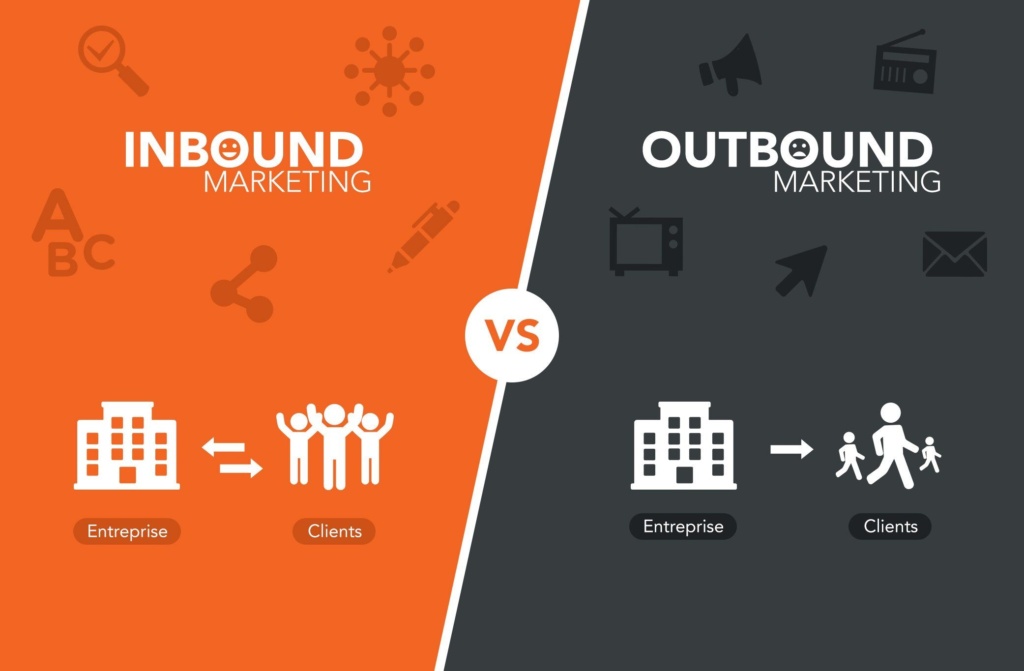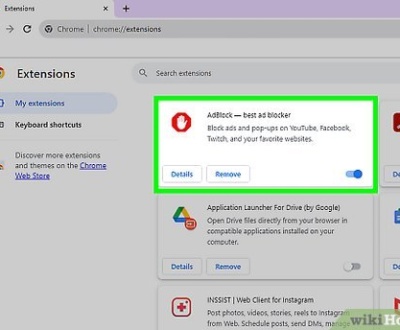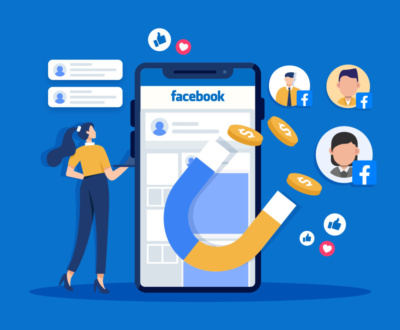Inbound vs Outbound Marketing: What’s the Difference?
- November 21, 2022
- Digital Marketing, Inbound Sales, Lead Generation, Outbound Sales
The age old debate of inbound marketing versus outbound marketing… why is there a debate and why do you have to choose a side?
Inbound marketing (getting customers to come to you) and outbound marketing (approaching customers actively) have different approaches to reaching and attracting customers. Shifts in customer behaviour means that more and more people are opting for the internet to find answers to their queries which has significantly changed the way people buy, and importantly, changed the way people obtain information about what it is they need. Consequently, this has changed the marketing focus in order to gain more sales.
So, which marketing approach is best suited for marketing today?

Outbound marketing
Outbound marketing includes most of what could be called traditional marketing. Some common methods include TV/radio, billboard, magazine, direct mail and advertising. Outbound marketing has been around for many years and is still largely adopted by many businesses for reaching mass audiences. The question is, can it keep up with today’s fast-moving business environment?
Ask yourself the following questions:
- How many times have you changed the channel during an ad break?
- How many times have you hung up on a telemarketer?
- How many times have you closed the door on a salesperson?
- When was the last time you used the yellow pages to search for a business?
The point here is that outbound marketing is becoming less effective and less responsive than it once was. Some people feel the traditional form of marketing can be quite interruptive as they are consistently exposed to hundreds of marketing messages daily creating a less engaged audience.
This is not to say the method has completely perished. If an outbound marketing strategy is executed effectively then it is still capable of capturing the attention of your target market and delivering optimal results. However, the downside to the outbound way is that it is harder to measure ROI and is often a lot more expensive than the inbound way.
5 EXAMPLES OF OUTBOUND MARKETING
In the past, outbound marketing meant newspapers and TV commercials. These days, businesses are more concerned with reaching customers online. Therefore, outbound strategies often include:
- PPC Advertising: Pay-per-click advertising means purchasing a top ranking spot on a search engine results page. Every time a consumer clicks on that promoted link, you pay.
- Email marketing: The initial generation of an email list could be considered inbound marketing. But once you have the email addresses of your consumers, you are engaging in outbound marketing. Every time you send a newsletter, an announcement, a coupon, or any other content, you are going to the customer, hoping to attract them back to your site.
- Online events: Hosting a webinar, online conference, live chat, Facebook group meeting, or any other type of online event can be a good tool to have in your marketing strategy. By going to the customers and inviting them to join you for a special event, you make a lasting impression on your potential leads.
- Social media marketing: When you pay to have a message promoted and shared to millions of users, you are engaging in some outbound marketing. This can help you get your message and link out to a much wider audience than you have, based on algorithms within the social media site itself to match your product or business with those who have an interested in what you offer.
- Content Syndication: Promoting content on social media is actually a type of content syndication, though many don’t realize it. Any time you pay to have your content gathered and displayed to a whole new audience that you didn’t have, you are engaging in content syndication. Guest websites, RSS feeds, and similar tools can work wonders for a startup or small business.
PROS AND CONS OF OUTBOUND MARKETING
There are some reasons why businesses may want to use outbound marketing. For example, companies that primarily sell to Baby Boomers would want to focus on outbound marketing because it is familiar. Other pros of outbound marketing include:
- Not very time consuming; typically runs automatically once being put into place.
- Spreads local awareness much faster.
- Reaches demographics that may not be active Internet users.
Outbound marketing is not always the best choice, however. Some of the cons include:
- Expensive, and lead generation stops when you stop paying.
- You approach customers when they may not be ready to buy.
- No engagement typically results from outbound marketing.
- Your advertisements can be blocked by spam filters and other technology.
Inbound marketing
Inbound marketing serves an online purpose to generate more traffic, leads and sales. The inbound marketing methodology is about creating useful and relevant content that helps visitors make informed purchase decisions or answers queries to their questions. This is know as content marketing, a strategic technique to naturally attract leads and drive sales. It is less interruptive than the outbound method and more ‘attractive’. Social media, blogs, search engine optimization, eBooks and email marketing are examples of ways to reach your ideal customer. One of the key benefits of the inbound methodology is that leads that do come to you are ‘pre-screened’ and educated in the way you would want them to be educated. This means that you can reduce the amount of time you spend in the sales cycle and increase your chances of converting the lead into a customer.
Now ask yourself these following questions
- How many customers to you currently get through your website?
- Would building a strong online presence increase your perceived expertise in your field?
- Would educating your customers about your products or product category assist in the sales process?
- Do you want customers coming to you?
Since the digital age is largely driven by the internet, Inbound Marketing is a solid strategic approach for achieving business growth and sales leads. Many B2B and B2C companies have adopted an inbound marketing strategy simply because it is easier to measure ROI and generates good quality leads.
5 EXAMPLES OF INBOUND MARKETING
Inbound marketing can sometimes not even look like marketing at all. For example, you may think of number one on this list as putting out a product, but think again.
- Publishing an eBook: This inbound marketing technique is designed to drive traffic back to your website, your service, or your other books. Choose an eBook topic that you or a ghostwriter can write quickly, make it relevant to your service, and link your service at the end.
- Blog: A blog is the most basic type of inbound marketing. The blog has to be filled with relatable content that is often expected to be both vast and deep. A blog is a great digital marketing tool because it comes with a lot of analytics tools where you can test out what is working and what isn’t.
- SEO: Getting any content online to the top of a Google Ads Page full of results is just wishful thinking…or is it? By optimizing your content to reach more people, you invite them to start a dialogue with you or to take some action.
- Social media marketing: Presenting a strong brand image on social media is essential. Social media trends change over the years, but Facebook, Twitter, and LinkedIn are all still solid choices for your social media marketing attempts.
- Make videos: Just like a blog, a video channel should produce high-quality content that viewers really want to see. Make the branding and CTA subtle while you focus on drawing in the most followers and providing them with useful information. Most small and large businesses are starting to address the rise in video marketing and are hiring video marketing agencies or creating in house teams to create branded content
PROS AND CONS OF INBOUND MARKETING
For most businesses, inbound marketing is a great choice. It is very cost effective, with almost no upfront monetary costs. And because inbound marketing is initiated by the customer, you have a much higher chance of getting clicks from those who are ready to buy.
However, there are some things to know about inbound marketing. It can be very time consuming to prepare advertisements, and keep up with changing networks. It also relies, at least in part, on luck, when you are waiting for organic follows from search engine results.
What is the main difference between inbound and outbound marketing?
The biggest difference between the two types of marketing is who is doing the initial approach. However, you can see how this tiny little point can change the entire experience for everyone. Unless you are totally confident in your ability to know your customer inside and out, outbound marketing can leave them feeling spammed. But inbound marketing has its own unique challenges.
What do we suggest in regards to inbound marketing versus outbound marketing?
At the serial seller, we work with a lot of small-medium businesses that want to dabble in acquiring new clients but don’t want to spend too much money straight away.
Which makes a lot of sense!
We suggest utilizing an outbound marketing strategy initially to see a quick ROI and also allow you to refine your messaging and in most cases your ideal target persona.
Once you have a grasp on your target persona and the messaging for them, we suggest gradually moving deeper into the inbound marketing territory.
This can be done via retargeting ads and social media marketing.
Unless you are picking at your toe nails because you have so much time available, I wouldn’t start a blog until you do have free time as it generally takes at least 6 months for results and a blog can take a while to research, write & post.
If you need help with your businesses sales and marketing strategy, book a call with us.
About us and this blog
We are a Full-Service Sales & Marketing provider that aims to help small to medium businesses increase their leads and sales while helping remove the business owners from their day-to-day activities so they can focus more on the long-term goals of their business.
Book a Meeting with us!
We offer Done-For-You Sales, Sales Coaching, and Advisory as well as Digital Marketing Services. If you want to increase the leads generated for your business and need some guidance and accountability, book a call with us now.
Subscribe to our newsletter!
More from our blog
See all postsRecent Posts
- How Do You Stop Google Ads May 9, 2025
- How to Make Money Off Social Media May 5, 2025
- How to Duplicate Page WordPress May 1, 2025










Pingback: Google Ads Inbound Marketing Strategy for Small Businesses